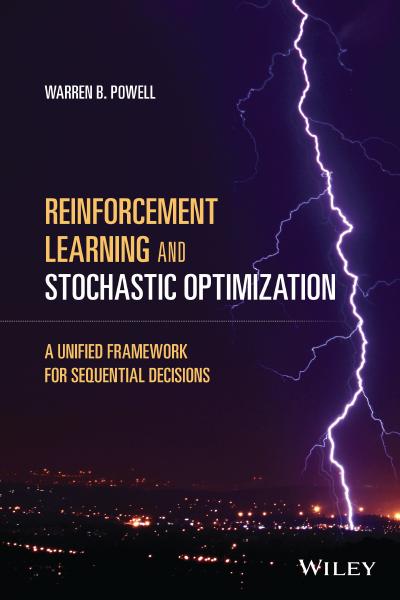
English | 2022 | ISBN: 978-1119815037 | 1136 Pages | PDF, EPUB | 102 MB
Reinforcement Learning and Stochastic Optimization
Clearing the jungle of stochastic optimization
Sequential decision problems, which consist of “decision, information, decision, information,” are ubiquitous, spanning virtually every human activity ranging from business applications, health (personal and public health, and medical decision making), energy, the sciences, all fields of engineering, finance, and e-commerce. The diversity of applications attracted the attention of at least 15 distinct fields of research, using eight distinct notational systems which produced a vast array of analytical tools. A byproduct is that powerful tools developed in one community may be unknown to other communities.
Reinforcement Learning and Stochastic Optimization offers a single canonical framework that can model any sequential decision problem using five core components: state variables, decision variables, exogenous information variables, transition function, and objective function. This book highlights twelve types of uncertainty that might enter any model and pulls together the diverse set of methods for making decisions, known as policies, into four fundamental classes that span every method suggested in the academic literature or used in practice.
Reinforcement Learning and Stochastic Optimization is the first book to provide a balanced treatment of the different methods for modeling and solving sequential decision problems, following the style used by most books on machine learning, optimization, and simulation. The presentation is designed for readers with a course in probability and statistics, and an interest in modeling and applications. Linear programming is occasionally used for specific problem classes. The book is designed for readers who are new to the field, as well as those with some background in optimization under uncertainty.
Throughout this book, readers will find references to over 100 different applications, spanning pure learning problems, dynamic resource allocation problems, general state-dependent problems, and hybrid learning/resource allocation problems such as those that arose in the COVID pandemic. There are 370 exercises, organized into seven groups, ranging from review questions, modeling, computation, problem solving, theory, programming exercises and a “diary problem” that a reader chooses at the beginning of the book, and which is used as a basis for questions throughout the rest of the book.
HomepageResolve the captcha to access the links!